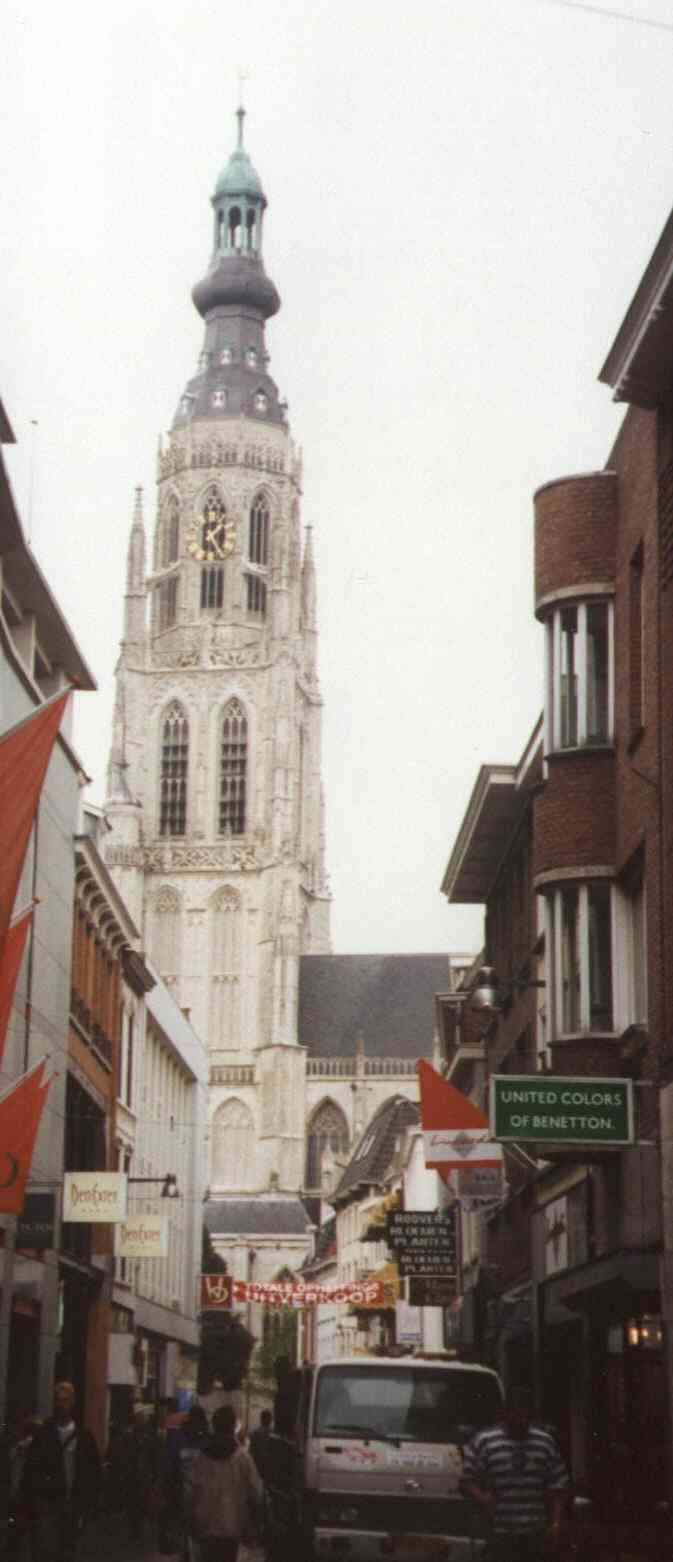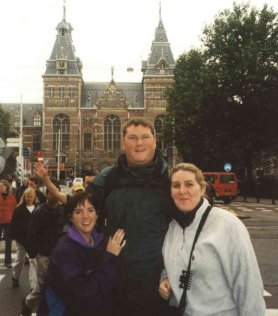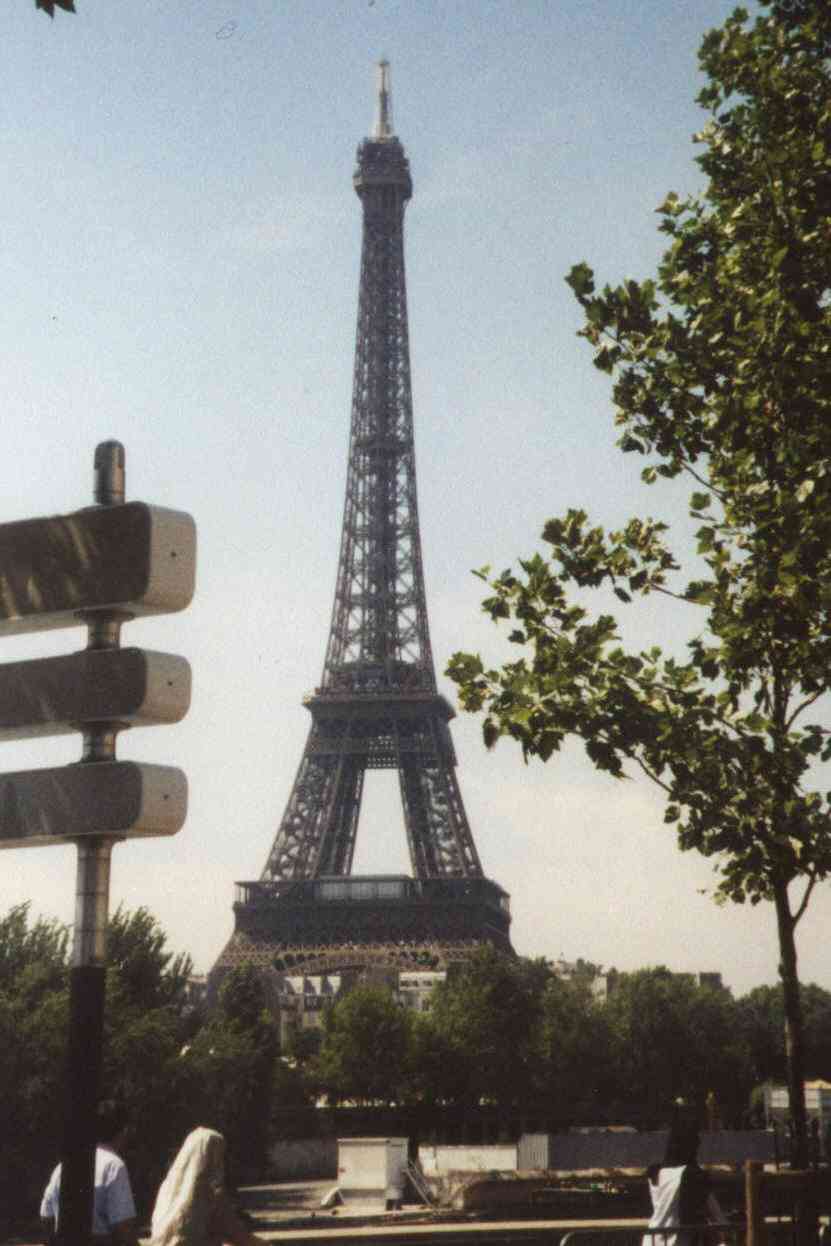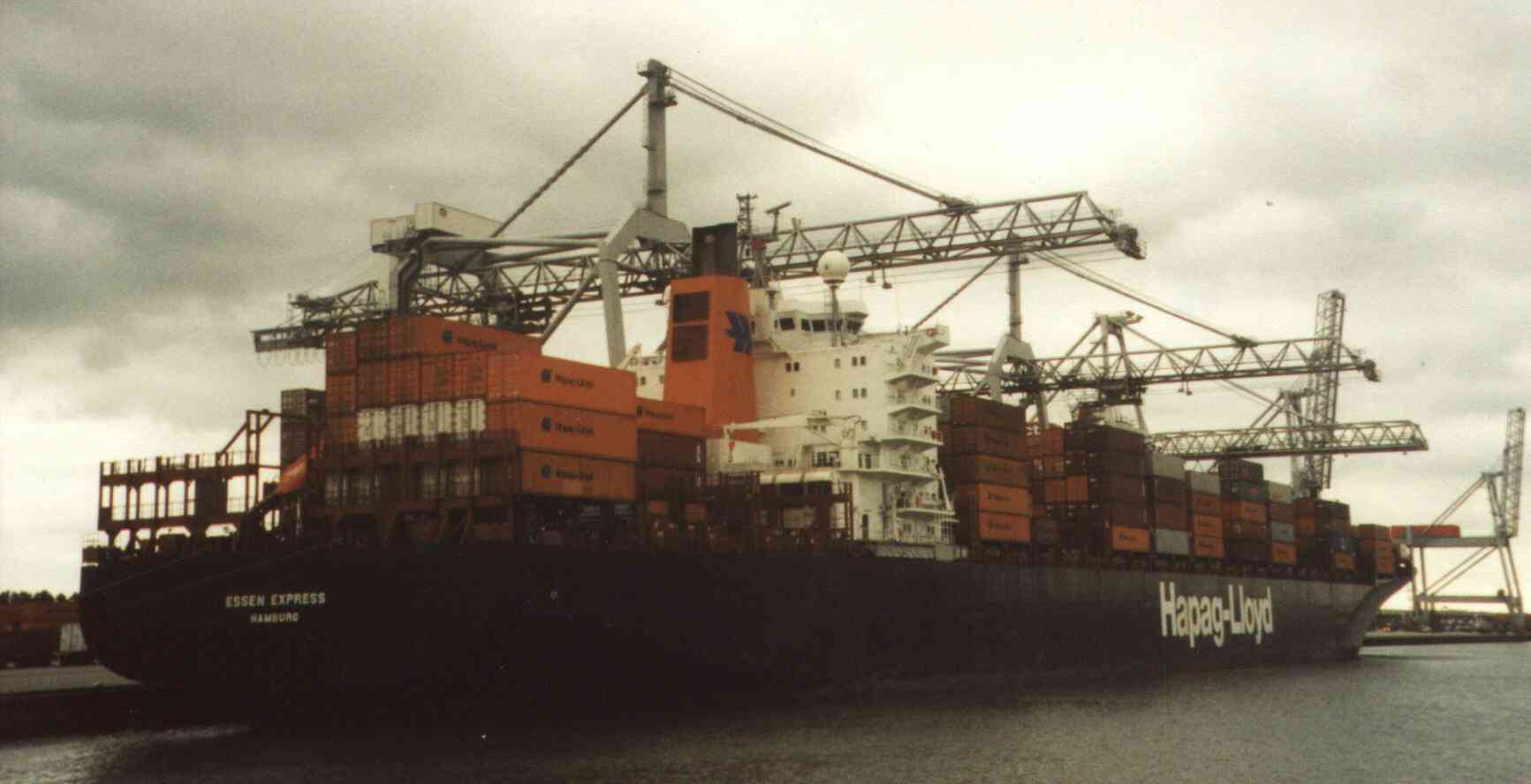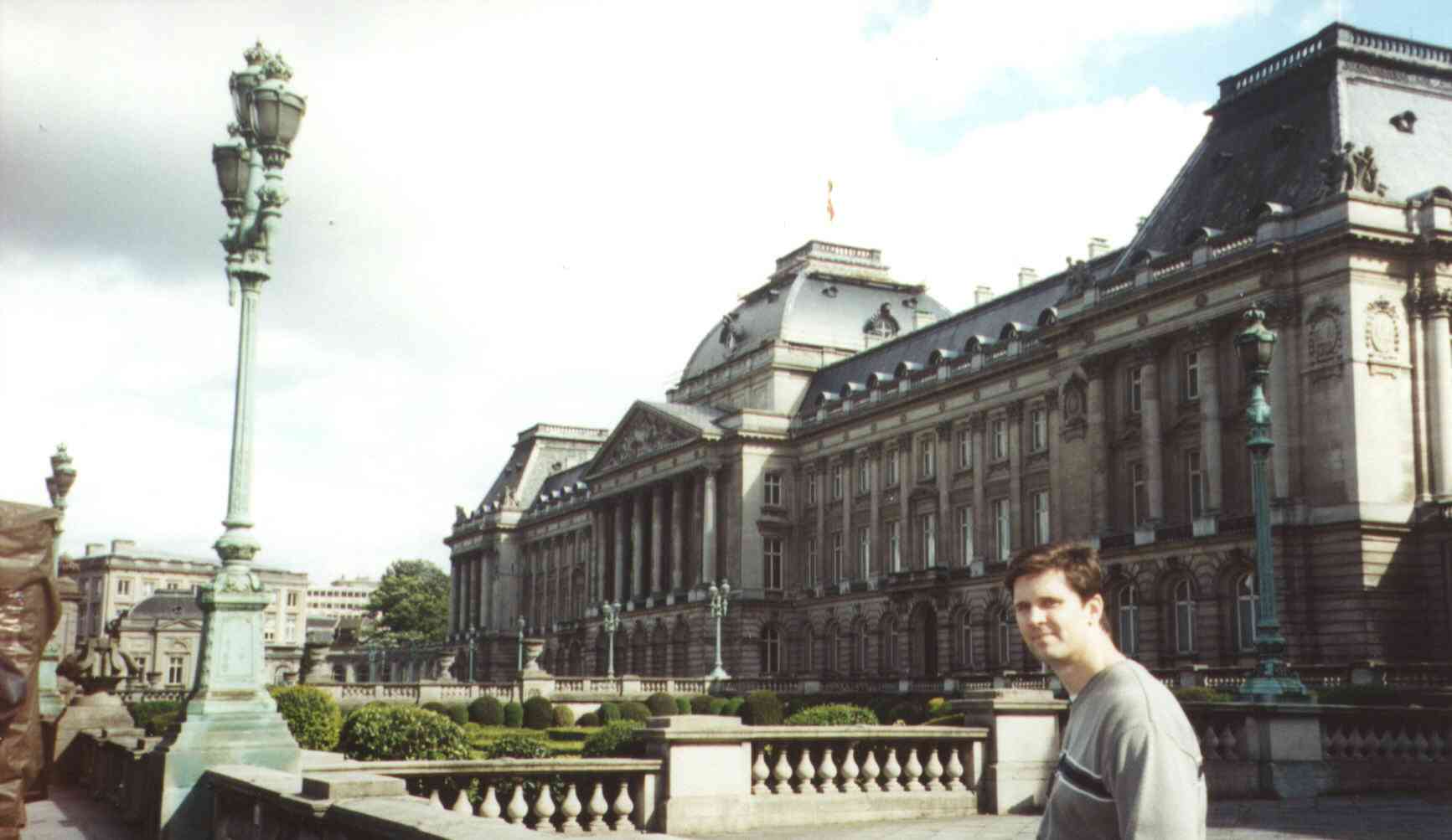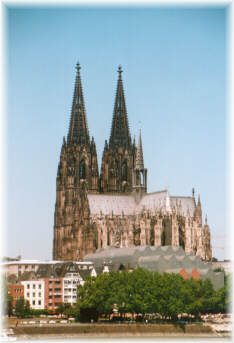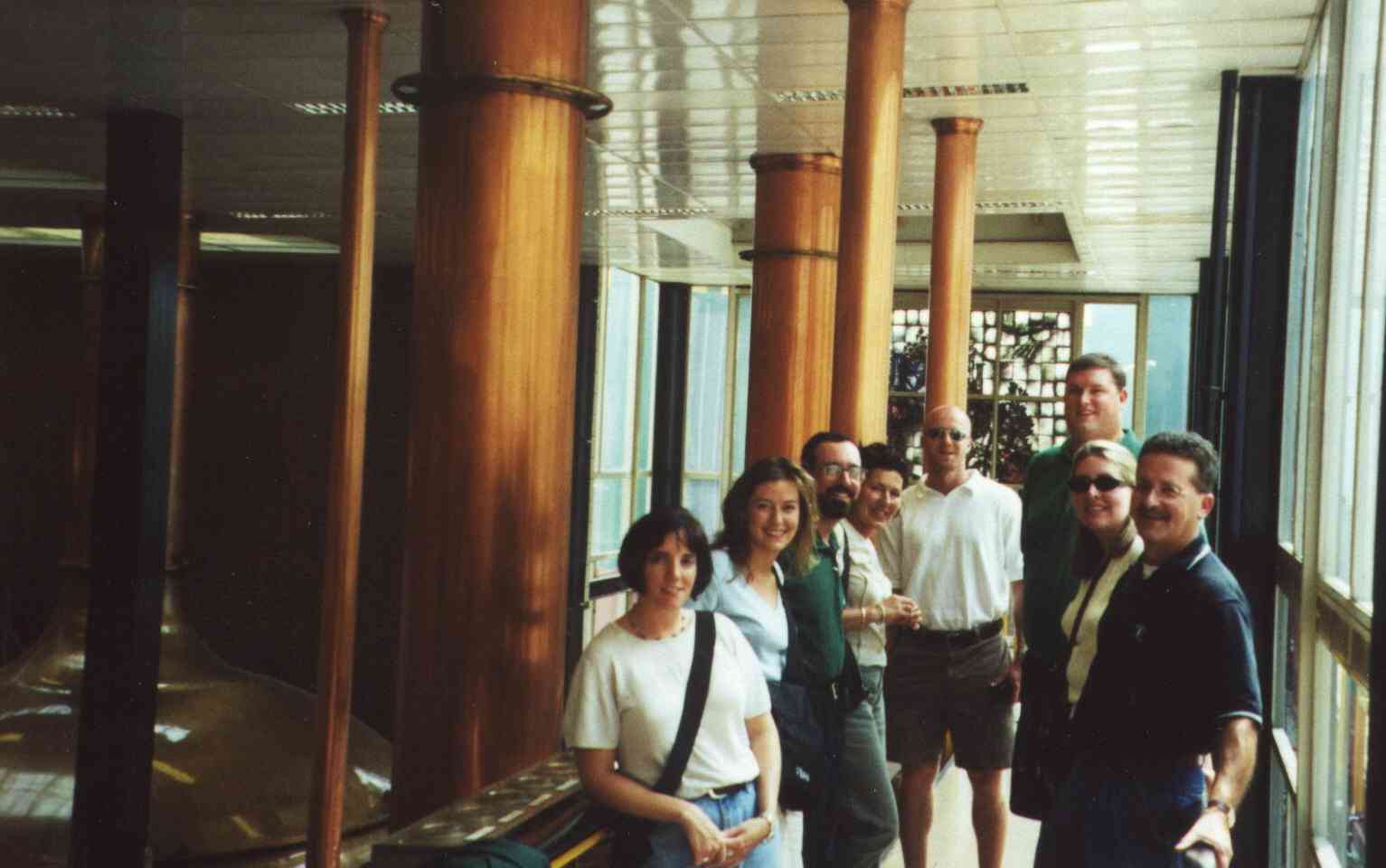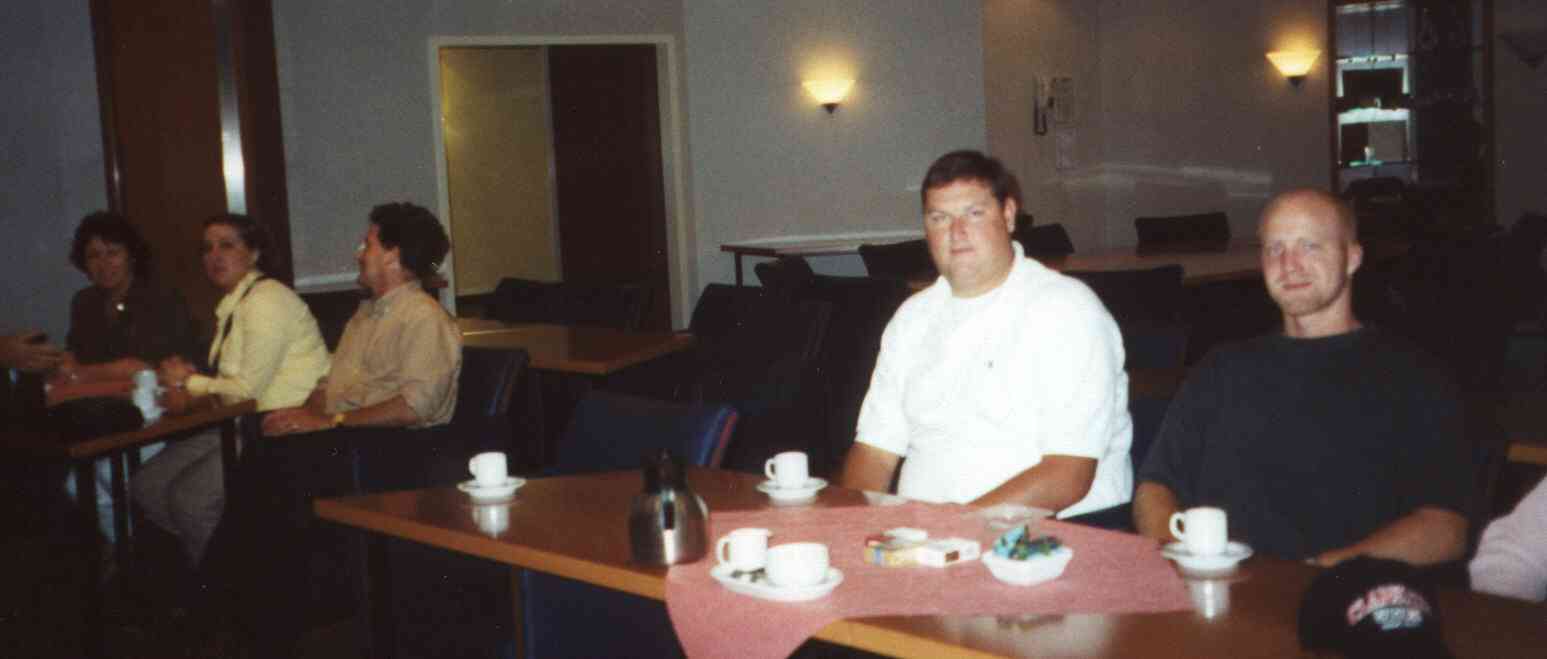ECONOMICS 493/693
STUDY ABROAD: EUROPE/EUROPEAN BUSINESS
CONDITIONS

Summer II July 2002
Instructor - Professor Robert F. Mulligan
The Hogeschool Brabant,
Breda, Netherlands
mulligan@wcu.edu
http://paws.wcu.edu/mulligan
Offered as IBUS 488 or 693 (for graduate students); 3 credit hours
Come see first hand the dynamic changes underway with our largest trading partner, the European Community, in this study tour for business students to the Netherlands and surrounding countries. Not only will you interact with Dutch business faculty and business professionals but you will have numerous opportunities to experience European culture in several of Europe's finest cities: Amsterdam, Paris, Cologne, and the smaller cities of the Netherlands.
The text for the course is A New
Europe? published by Foreign Affairs magazine, a collection of
articles about the politics, business climate and economy of Europe
|
Date |
Possible Itinerary--Subject to Change |
|
Sun July 8 |
Depart for Atlanta Airport approximately 10:30 a.m. |
|
Mon July 9 |
Arrive Amsterdam Schipol Airport; train to Breda (2 hours), settle in accommodations, Breda orientation |
|
Tue July 10 |
European
business climate; trip orientation at the Hogeschool Brabant in Breda |
|
Wed July 11 |
Amsterdam: Canal cruise and free time |
|
Thu July 12 |
Amsterdam: Anne Frank House, Rijksmuseum, and free time; Return Breda |
|
Fri July 13 |
Depart for Paris |
|
Sat July 14 |
Paris tour: Eiffel Tower, Louvre, Tuilleries, Sacre Coeur, Montmartre |
|
Sun July 15 |
Paris tour: Seine Cruise, Notre Dame, Invalides, Montparnasse. Return Breda |
|
Mon July16 |
Hogeschool faculty interaction; Reading: The Trouble with France by Dominique Moisi Evening: Outdoor cafes of Breda |
|
Tue July 17 |
Day trip to Cologne, Germany |
|
Wed July 18 |
Hogeschool lecture Reading: The Dollar and the Euro by Fred Bergsten |
|
Thu July 19 |
Day trip to Bruges, Belgium |
|
Fri July 20 |
Morning: Hogeschool sessions; readings on European business; Afternoon: bicycle tour of surrounding parks and countryside |
|
Sat July 21 |
Depart for Schipol Airport |
|
Sun July 22 |
Early morning: Depart for Atlanta arrive late afternoon Atlanta time, return to Cullowhee. |
|
Fri Aug 3 |
Due date for submitting final paper (see below) |
DETAILS
There is a limit of 15 students for this trip. Space is available on a first come, first served basis. Cost is $2,100 which includes airfare; after March 1 the cost is $2,450. Tuition and some meals are not included. A deposit is required of $150 by March 1.
Pack light but bring at least two pairs of comfortable shoes - one or both pair can be athletic shoes. Expect to walk twenty miles on a typical day. Bring a disposable rain poncho. You may not need it, but if you do, you'll be glad you brought yours. Bring an umbrella and a sweater or sweatshirt and a reasonably heavy jacket or windbreaker.
|
Study Abroad Photo Tour |
|
|
Breda The centerpiece of this historic city is the 100 meter tall tower of the famous Grotekircke, begun in the fourteenth century. Breda is home to our sister institution, the Hogeschool Brabant, and the Netherlands Royal Military Academy. Classes take place at the Hogeschool and housing is provided in the Hogeschool's student apartments. Breda was the place of exile in the Netherlands of Britain's Charles II and formed a base for Spanish occupation of the Netherlands during the Thirty Years War. Fortifications and canals from this period still dot the cityscape. The city is guarded by an equestrian statue of King William III of the Netherlands and Great Britain. |
|
|
Amsterdam The capital of the Netherlands, and one of the most exciting and attractive cities of Europe, features scenic canals, historic churches, museums, and palaces. We visited the Rijksmuseum and the Anne Frank Museum, and enjoyed a cruise on the canals and the Amstel River. |
|
|
Paris The capital of France features numerous historic attractions, including the Louvre, the home of the kings of France for nearly one thousand years, today one of the world's largest and most spectacular art museums, the cathedral of Notre Dame on the Ile de la Cite, the Madelaine or church of St. Mary Magdeline, the Assemblee National, the Opera or Palais Garnier, the Arc de Triomphe, and the Sacre Coeur or church of the Sacred Heart in Montmartre, the Dome of the Invalides where Napoleon I is buried, and of course, the Tour Eiffel. Highlights included a Seine river cruise and a trip to the top of the sixty-story Tour Montparnasse, the tallest office building in Europe. |
|
|
Rotterdam The largest and busiest city in the Netherlands is also the busiest port in the world. Our day trip included a harbour cruise and a walking tour of the downtown area. |
|
|
Brussels The capital of Belgium hosts the headquarters of the European Union, NATO, and UNESCO. Other historic sites include the Place de Ville with its medieval guildhalls, the Palais de Justice, and Palais Royale. This tri-lingual kingdom includes French, Dutch, and German-speaking groups. |
|
|
Cologne The oldest city in Germany, once capital of the Roman province of Colonnia Germania, Cologne - Koeln in German - is dominated by the nearly 200 meter twin towers of the Dom, or Cologne cathedral. Begun in the thirteenth century to replace Gross St Martin, an ancient romanesque church which still stands, and house the shrine of the three kings, the cathedral was not completed until 1880. It was the tallest building in the world until the Washington monument was completed. Maintenence and repair are ongoing. Our day trip will also feature a Rhine river cruise. |
|
|
Heinekin Brewery We visited Heinekin's largest brewing facility which produces Heinekin and Amstel beers for European sale. |
|
|
Phillip Morris We visited Phillip Morris's facility for producing cigarettes for sale to Belgium, the Netherlands, France, Germany, and Italy. Because each EU country has different taxation systems, cigarettes have to be packaged and revenue-stamped in a special manner for each destination country. |
|
|
|
|
|
ECON 493 STUDY ABROAD: EUROPE European Unification Writing Assignment |
||||||||||||||
|
Each assigned reading addresses some problems facing European
unification. Some are more negative in their assessment than
others. Some address problems associated with different countries or
regions within the EU. Assigned readings are taken from the Foreign
Affairs collection, A New Europe?:
General Assignment From the assigned Foreign Affairs readings, select two to compare and contrast in a three-to-five page paper. Provide a one-half to one-page summary of each of the two readings you are comparing. Then present, in one to two pages, your discussion of how the two authors agree, how they disagree, and a statement of which view is correct or more persuasive. Although in your analysis, you will be presenting your own opinion, your paper will be written in the third person. No more than two-thirds of your paper may be devoted to summarizing the argument of both readings, and at least one third must be devoted to your analysis. Perfect grammar and spelling are essential to receive a passing grade. In summarizing the readings, emphasize the topic the authors discuss so it will be easy to compare and evaluate their positions, particularly if they address the same topic. Do not get lost on tangents. If the two readings do not discuss similar aspects of unification, compare their positions on the desirability of unification, its practicality, or both. Do not exceed the five-page limit. Summaries Writing a summary of a journal article requires special reading skills in
addition to composing skills. Following the procedure below may assist you in
writing concise, clearly organized article summaries. Analysis The analysis part of your paper requires you to compare objectively what the two authors say, noting points of agreement and disagreement. Emphasize broad themes over details, though you may cite details as examples if space allows. This section also requires you to present a subjective statement of what parts of the authors' argument is valid, correct, or persuasive. Here you are presenting your opinion in the third person. You may not write, "I feel Malcolm's position is right," but you may write something like, "The evidence provides more support for Malcolm's position than for Soros's." 1. State whether the two authors address the same issues or different topics. If they address the same issues, state where they agree and where they do not. If the two authors address different issues, what are their positions on the desirability of European unification? How far would they be willing to go? What practical issues do they raise? This portion should be brief. Concentrate on the authors' main points, not details. 2. Focus on the assumptions the authors make. State your reaction to, opinion of, or evaluation of these assumptions or assertions. State this in the third person, and clearly support your reactions so that they do not appear to be arbitrary judgments. This may be accomplished by support from authority, logic, observation, or personal experience. What emerges from your analysis? 3. Consider what kind of evidence is presented to support the author's argument. Is the argument well supported? Does the evidence provided by the other author show the other author's opinion is more correct? Can the evidence from the other paper be interpreted as supporting the first? Is each author's argument logical? Does the author provide evidence for the conclusions? Is the evidence persuasive? 4. What are each author's assumptions? Are they explained or implied? Are any of the assumptions offensive? What biases pervade each article? Are the assumptions and biases obvious, or do they lurk behind a stance of neutrality and objectivity? Do the assumptions and biases affect the validity of the article? Are there flaws in the author's logic? What evidence or ideas has the author failed to consider? (E.g., evidence provided by the other author?) Introduction and Conclusion When you have finished the body of your paper, prepare an introduction and a conclusion. Each should be no more than one-half page, and the introduction should interest the reader in the very important issues addressed by the authors of the two articles and yourself. End the introduction with your thesis statement. Citations Use American Psychological Association citation format. As a minimum, cite the two Foreign Affairs articles. Hofstadter, D.R. (1982, November). Metamagical themas: Default assumptions and their effects on writing and thinking. Scientific American, pp. 18-36. Behrens, Laurence and Leonard J. Rosen. Writing and Reading Across the Curriculum. Boston: Little, 1982. Due date is Friday, August 3 Email your paper to me at <<mulligan@wcu.edu>>, either as an MS Word attachment or cut-and-paste the text into your email message. |
